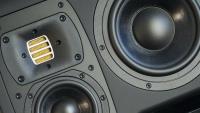 Add My Company
Add My Company
Sign In
Passive or Active Speaker Systems?
08-04-2024

Loudspeakers come in many different sizes and variations. Choosing the right equipment for your needs, requires a bit of understanding of what?s available. This article will look at how a loudspeaker gets its power and explain the differences between Passive and Active speakers.
For many applications, full range speakers are all that is required. These will contain a low frequency driver to handle the bass and midrange, plus a high frequency driver to handle the treble. Some applications also require subwoofers and these will typically have only one type and size of low frequency driver.
Passive
A passive loudspeaker requires a separate power amplifier, which is not included in the speaker itself. With a passive speaker system, a power amplifier receives a signal from a pre amp source (eg. mixing desk or DJ mixer) then increases the amplitude of this signal and provides enough electrical current to drive the speaker effectively.
If the speaker is a full range or mid-high unit, it will have at least one bass driver and one high frequency driver. As these components are designed for their specific bands, they must be sent the correct part of the audio spectrum. If a bass driver is sent treble, it will almost certainly sound poor, but if a tweeter is sent bass, it will be destroyed in no time at all. To separate the audio, there will be a passive crossover inside the speaker, which splits the incoming audio into high and low frequencies for the specific drivers.
Active
Whether it is a subwoofer or full range/mid-high speaker, if it is an active speaker (sometimes referred to as powered), it has a built-in power amplifier. This makes active speakers very portable and easy to set-up and takes away the worry of choosing the individual components correctly. Active speakers are available in different sizes, from small studio monitors to large touring systems for concerts and festival. A well-designed active speaker has amplifier modules which are designed for the drivers in that particular speaker. This allows the manufacturers to optimise audio quality because the amplifier?s power and output impedance is matched to the speaker drivers. The crossovers required to split the audio signal up for the different drivers are built into the amplifier modules and in many cases are carried out with in-built digital processing. This can help to make it a simple plug and play set up which is perfect for studio monitors and portable PA systems.
For more information on Passive or Active Speaker Systems? talk to Audioserv Ltd
Enquire Now
List your company on FindTheNeedle.

